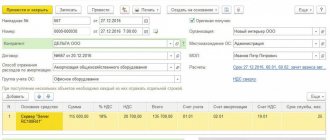2018 has brought new changes in accounting and will be active. Chief accountants need to be attentive to all the subtleties of the transition to new standards. You should pay special attention to the correctness of record keeping in the information base and put all matters in order. Otherwise, errors and inaccuracies are fraught with fines and inspections.
In April 2015, the Russian Ministry of Finance approved a program for the development of federal accounting standards for public sector organizations (Order No. 64n dated April 10, 2015).
According to the program, ten standards must be in effect from January 1, 2021. However, the entry into force of three of them was planned to be postponed from 2021 to 2021: the Russian Ministry of Finance prepared a draft order to introduce appropriate changes to the program.
On October 31, 2021, the Russian Ministry of Finance issued Order No. 170n “On approval of the program for the development of federal accounting standards for public sector organizations for 2017-2019.” and on invalidation of orders of the Ministry of Finance of Russia dated April 10, 2015 No. 64n “On approval of the program for the development of federal accounting standards for public sector organizations” and November 25, 2016 No. 218n “On amendments to the order of the Ministry of Finance of Russia dated April 10, 2015 No. 64n “On” approval of the program for the development of federal accounting standards for public sector organizations."
The standards come into force in stages from January 1, 2021. The final transition to use is planned for 2021. At the same time, changes will be made to the current instructions for accounting and reporting, forms of primary accounting documents and registers.
Currently, five standards have been approved and registered with the Russian Ministry of Justice:
- “Conceptual foundations of accounting and reporting of public sector organizations” (Order of the Ministry of Finance of Russia dated December 31, 2016 No. 256n);
- “Fixed assets” (Order of the Ministry of Finance of Russia dated December 31, 2016 No. 257n);
- “Rent” (Order of the Ministry of Finance of Russia dated December 31, 2016 No. 258n);
- “Impairment of assets” (Order of the Ministry of Finance of Russia dated December 31, 2016 No. 259n);
- “Presentation of accounting (financial) statements” (Order of the Ministry of Finance of Russia dated December 31, 2016 No. 260n).
Drafts of other standards are posted on the website of the Ministry of Finance of Russia in the section “Accounting and accounting (financial) reporting of the public sector”, subsection “Financial reporting standards for the public sector”.
As noted, changes in accounting will be introduced gradually, from 2021 to 2021. 29 new standards are expected . Innovations entail a number of significant changes. Their goal is to increase the efficiency of government agencies.
The name of the standard, “Conceptual Framework for Accounting and Reporting for Public Sector Organizations,” speaks for itself. This is a basic document that defines uniform requirements for accounting and reporting in public sector organizations:
- basic rules (methods) of accounting;
- accounting objects, general rules for their recognition (derecognition), valuation (monetary measurement) and valuation methods;
- general rules for the formation of information disclosed in accounting (financial) statements, their qualitative characteristics;
- basic principles (assumptions) of reporting preparation;
- basic requirements for inventory of assets and liabilities.
Public sector organizations must apply the standard when maintaining accounting (budget) records from January 1, 2021. To prepare reports, the provisions of the standard must be followed starting with the 2021 reporting. Reporting for 2017 is presented according to the old rules.
The provisions of the standard are applied simultaneously with other approved standards, as well as regulatory legal acts that govern accounting (budget) accounting and reporting.
To understand the essence of the upcoming changes, the study of standards must begin with the conceptual foundations. Let's analyze the provisions of the document. What are fundamentally new approaches to data generation?
Global changes
Accounting objects
The main innovations concern accounting objects. The standard defines assets, liabilities, net assets, income, and expenses for the first time.
An asset is property (including cash and non-cash funds) that meets the following conditions:
- belongs to the institution and (or) is in its use;
- controlled by the institution as a result of the facts of economic life that have occurred;
- contains useful potential or economic benefits[1].
The definition of an asset uses a number of new terms. Useful potential is the suitability of an asset for use in the activities of the institution, exchange, and repayment of accepted obligations. The use of property does not necessarily have to be accompanied by the receipt of funds. It is sufficient that it serves to enable the institution to perform its functions and achieve its goals. Thus, the asset is characterized by certain consumer properties.
Future economic benefits are recognized as receipts of cash (cash equivalents) resulting from the use of an asset, for example, lease payments.
Control over an asset can be said if an institution has the right to use the asset (including temporarily) to extract useful potential or obtain future economic benefits and can exclude or regulate access to this useful potential or economic benefits. For accounting purposes, it is assumed that the institution controls the property that the owner (founder) has assigned to it.
A liability is a debt, the settlement of which will result in the disposal of assets embodying useful potential or economic benefits. Obligations are accepted for accounting if they arose by virtue of a law, another regulatory legal act, a municipal act or an agreement (contract, agreement).
The difference between assets and liabilities on a certain date shows the value of net assets. Property for which the institution is not responsible for its obligations is not included in the calculation of net assets. Net assets can take both positive and negative values.
Income is an increase in the useful potential of assets and (or) the receipt of economic benefits during the reporting period (except for income associated with contributions of the owner, founder). The contribution of the owner (founder) is the property that he transferred to the institution (except for cash and cash equivalents).
An expense is a decrease in the useful potential of assets and (or) a decrease in economic benefits for the reporting period as a result of the disposal or consumption of assets or the occurrence of liabilities.
The exception is the seizure of property by the owner (founder), with the exception of cash and cash equivalents.
The difference between income and expenses represents the financial result for the reporting period.
Budget income is taken into account by administrators, expenses are taken into account by the main managers (managers) and recipients of budget funds.
Thus, when reporting for 2021, only assets can be listed on the balance sheet. But by 2021, the accounting department of the institution needs to sort out the division of property into an asset and a non-asset (Fig. 2). The same thing should happen with accounts receivable, they need to be written off and removed from the balance sheet.
Recognition of accounting objects
An object is accepted for accounting and (or) reflected in financial statements if three conditions are simultaneously met:
- the object meets the established definition;
- the institution is confident in the future increase (decrease) in useful potential or increase (decrease) in future economic benefits associated with the object;
- the cost of the object can be estimated[2].
If the value of an object cannot be assessed, it is not recognized in accounting, but information about it is disclosed in the explanatory note to the financial statements.
The object is removed from the balance sheet on the date when at least one of the listed conditions is no longer met.
If income is recognized over several accounting periods, expenses that correspond to these income must be allocated between the same accounting periods.
Assessment of accounting objects
The standard introduces a new concept of “fair value”. It corresponds to the price at which ownership of the asset is transferred between independent parties to the transaction. Accounting items that need to be measured at fair value, and the cases in which it is used, will be established in the standards dedicated to these items.
The fair value of assets and liabilities can be determined by two main methods:
- market prices - based on current market prices or data on recent transactions with similar or similar assets (liabilities) completed without deferred payment;
- depreciated replacement cost - calculated as the difference between the cost of complete restoration (reproduction) of the useful potential of an asset or replacement of an asset (whichever is less) and the amount of accumulated depreciation calculated on the basis of such cost[3].
As an example of the cost of restoring (reproducing) an asset, the cost of restoring a building in the event of its destruction is given. The replacement cost of an asset is calculated based on the market purchase price of a similar asset with a comparable remaining useful life. For example, the cost of replacing a destroyed building with another building with a comparable useful life.
Generating data for reporting
The standard for the first time formulates the characteristics that information in reporting must meet:
- relevance (relevance) – data can be used for financial assessment of future events and (or) to confirm and adjust previously made conclusions;
- materiality – indicators influence user decisions;
- reliable representation (completeness, neutrality, absence of significant errors) – reporting includes all available data, which is selected objectively and formed in accordance with regulatory legal acts;
- Comparability – allows you to identify similarities and differences between such information and information in other reports;
- the ability to check and (or) confirm the reliability of data (verification) by direct calculation (for example, during inventory) or using formulas, models, and other methods;
- timeliness – availability of reporting to users at a time when information may influence decisions made;
- understandability - the composition (content) and form of presentation of information allow users of reporting who have the necessary knowledge about the activities of the institution to understand its meaning [4].
The standard for the first time enshrines the principle of priority of content over form. It means that information about accounting objects and facts of economic life should be presented in accordance with their economic essence, and not just their legal form.
The legal and economic content of the facts of economic life may differ or even contradict each other. For example, if we talk about property, then from a legal point of view the volume of rights to this property is important: it is in an institution with the right of operational management or leased, received for free use, for storage, or on commission.
From an economic point of view, to recognize property as an asset, what is important is not the rights to it, but its useful potential, ability to bring economic benefits and the ability to control the object.
Property may be used in the activities of the institution to achieve its statutory goals, but not owned by the right of operational management, but leased. The opposite situation is also possible: the property is assigned to the institution with the right of operational management and is listed on the balance sheet, but is unsuitable for use.
Currently, only property that is assigned under the right of operational management is reflected on the institution’s balance sheet. Property received for paid or gratuitous use is shown on off-balance sheet accounts. However, from 2021, the principle of presenting information in accounting and reporting is changing dramatically. It is not the legal, but the economic interpretation of the facts of economic life that becomes decisive. Thus, the accounting methodology comes closer to the approaches adopted in international financial reporting standards.
In relation to operations with property, this means that the right to use leased fixed assets will be reflected by the user (lessee) as part of non-financial assets as an independent accounting object[5]. This is also enshrined in the federal “Rent” standard, which also comes into force on January 1, 2021.
Instruction 174n with changes for 2021 - changes in the chart of accounts (account 205 00)
Account 205 00 000 “Calculations for income” reflects calculations for the income of a budgetary institution and transactions with them. Let's look at the changes:
1. New budget accounting entries have appeared:
| Operation | DEBIT | CREDIT |
| Accrual of income from rental property of a budget institution transferred under operating lease to tenants on the basis of agreements with them | 2,205 21,560 “Increase in accounts receivable for operating lease income” | 2 401 40 121 “Deferred income from operating leases” |
| Accrual of income from the rental of property of a budgetary institution transferred under a non-operating (financial) lease to tenants under an agreement | 2,205 22,560 “Increase in accounts receivable for income from finance leases” | 2 401 40 122 “Deferred income from finance leases” |
| Income from reimbursement to the lessor of expenses for the maintenance of the property transferred by him for use (upon the fact of corresponding requirements to the lessee) | 0 205 35 560 “Increase in accounts receivable for income from contingent rental payments” | 0 401 10 135 “Income from conditional rental payments” |
| Debt for unused balances of subsidies for other purposes in terms of balances, the need for which is not confirmed by the founder | 5,205 83,560 “Increase in accounts receivable for settlements of subsidies for other purposes” | 5 303 05 730 “Increase in accounts payable for other payments to the budget” |
| Debt for unused balances of subsidies for the purpose of budget investments in terms of balances, the need for which is not confirmed by the founder | 6,205 84,560 “Increase in accounts receivable for settlements of subsidies for capital investments” | 6 303 05 730 “Increase in accounts payable for other payments to the budget” |
2. New accounts have been introduced:
| Check | Name |
| 0 205 22 000 | Calculations of income from finance leases |
| 0 205 23 000 | Calculations of income from payments for the use of natural resources |
| 0 205 24 000 | Calculations of income from interest on deposits, cash balances |
| 0 205 25 000 | Calculations of interest income on loans provided |
| 0 205 26 000 | Calculations of interest income on other financial instruments |
| 0 205 27 000 | Calculations of income from dividends from investment objects |
| 0 205 28 000 | Calculations of income from the granting of non-exclusive rights to the results of intellectual activity and means of individualization |
| 0 205 29 000 | Calculations for other income from property |
| 0 205 32 000 | Calculations of income from the provision of services (work) under the compulsory health insurance program |
| 0 205 33 000 | Calculations of income from fees for providing information from government sources (register) |
| 0 205 35 000 | Calculations for contingent lease payments |
| 0 205 83 000 | Calculations for subsidies for other purposes |
| 0 205 84 000 | Calculations for subsidies for capital investments |
| 0 205 89 000 | Calculations for other income |
3. Account names have been changed:
| Check | Name in the old edition | Name in the new edition |
| 205 21 | Calculations of income from operating leases | Settlements with payers of property income |
| 205 31 | Calculations of income from the provision of paid services (works) | Settlements with payers of income from the provision of paid work and services |
| 205 81 | Settlements with payers of other income | Settlements with payers of other income |
4. Account group 40 “Calculations for forced seizure amounts” has been excluded.
Instruction 174n as amended for 2021 - changes in the chart of accounts (account 206 00)
In KOSGU, new sub-items were added to account 206 00 000 “Settlements for issued advances”, and therefore new accounts are being introduced:
| Check | Sub-article KOSGU |
| 0 206 96 000 “Calculations for advances for payment of other expenses” | 296 (from January 1, 2021) |
| 0 206 27 000 “Calculations for insurance advances” | 227 (from January 1, 2021) |
| 0 206 28 000 “Calculations for advances for services, work for the purpose of capital investments” | 228 (from January 1, 2021) |
| 0 206 29 000 “Calculations for advance payments for rent for the use of land plots and other isolated natural objects” | 229 (from January 1, 2021) |




